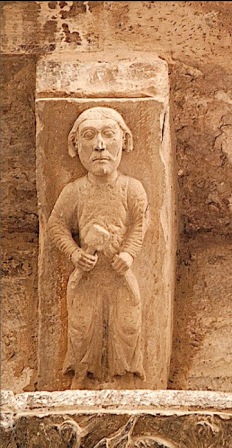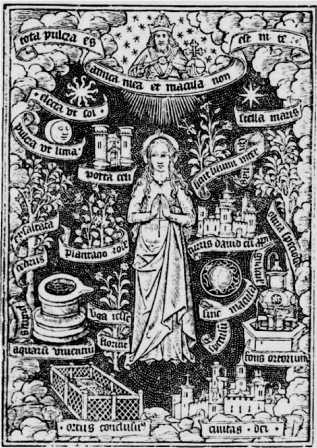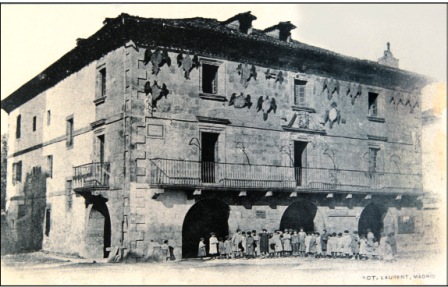11 February
lecture series
DISSEMINATION AND COMMUNICATION OF CULTURAL HERITAGE
Historic-artistic heritage, a condenser of values and identities
D. Ricardo Fernández Gracia
Chair of Navarrese Heritage and Art
Knowing and enjoying cultural heritage
Throughout this intervention we made some reflections on the views that historical and artistic heritage admits and requires for a more complete understanding: from its purely historical aspects (promotion, execution, creation, prices, dating..., etc.), to the aesthetic, technical, iconographic and use and function aspects.
Complementing and playing a leading role in our vision and recreation of the past are the cultural assets in the form of bridges, cathedrals, monasteries, stained glass windows, pieces of gold and silver work, cloister reliefs, organs or shawms, etc. Octavio Paz stated that "architecture is the least bribable witness of history" and Francisco Umbral affirmed that "painting is the great slate of history".
In 2009, the publishing house Chair published, among its essays, a delightful book by Víctor I. Stoichita graduate Cómo saborear un cuadro (How to savour a painting), in which he discusses the joy produced by the contemplation of a work of art and how this pleasure increases as we get to know the context in which it was created and its promoters. His pages are an example for the understanding of the effectiveness and power of images, in times when time for their contemplation was abundant, and their contemplation generated different sensations and evaluations.
With time and without haste, among the more or less obvious, we find elements that lead us, by way of keys, to discover and savour paintings, reliefs, engravings... etc., in everything that makes up our heritage, which is the set of goods inherited from the past, in which each society recognises a cultural value. The reading of images and heritage on core topic cultural leads us to interpret, and thus to understand, taste and enjoy the more or less hidden contents of the works.

Blacksmith. Façade of Santa María de Sangüesa

Flowerpot with pot and pointer. Church of La Magdalena de Tudela
"To be surprised and amazed is to begin to understand".
This beautiful phrase from the pen of José Ortega y Gasset illustrates the importance of the curiosity with which we should approach the contemplation of cultural heritage. Permanent curiosity about many things is characteristic of avid people and, in general, of anyone who wants to learn and investigate. Moreover, on more than a few occasions, this curiosity is the cause of finding ideas to realise something that no one has done before.
The ability to be surprised is source of questions and, on many occasions, it is more important to know the right questions than to know the answers. Along with curiosity, it is necessary to sharpen the capacity for observation, in line with the statement by A. Dumas: "he who reads learns a lot; but he who observes learns more".
The diversification of cultural levels in traditional society with very high levels of illiteracy can lead us to some areas of artistic and literary significance reserved for cultured minorities, in a phenomenon that we can call "semantic discrimination".
There are, therefore, different levels of reading, both to please the masses and the more elitist and refined minorities. In the theatre there were also quotations and erudite references inaccessible to the understanding of the unlettered. Alongside an immediate, narrative and "linear" storyline, there were subplots and symbolic elements that acted as a rhetorical complement that could only be understood by the educated. Something similar occurred in certain artistic compositions, particularly when the patron or artist possessed literary and learned resources.
It goes without saying that there were different tastes, on the one hand the majority public who enjoyed everything that vividly impressed their senses and a cultivated minority who, behind appearances, looked for proportion, correspondence or decorum (adequacy between signifier and signified) and distrusted what the majority approved of. A whole world of symbols and signs that were difficult to interpret turned book covers, commemorative medals and some paintings into veritable exercises in acuity.

Tota Pulchra. High Altarpiece of Santa María de Olite

Tota Pulcha, Heures de la Vierge a l'usage de Roma. Book printed in Paris by Thielman Kerver, 1505.
An advanced and free society must safeguard its heritage.
An advanced, cultured society with high levels of well-being cannot allow its cultural heritage to be absent from its daily life. Progress, to a certain extent, can be measured by the cultural level it has reached. This has generated that, in developed countries, there is a great social demand for the use and enjoyment of cultural goods. This fact has become a demand from the community to governments, which has been translated into the right of citizens to culture, as recognised in different constitutional texts.
The means for the perception of the whole message of our heritage are varied: from a visit multidisciplinary , a lecture, the reading of texts with the written impressions that they aroused in those who contemplated them in past centuries, or listening to music with them, to a reflection on the influence that they have exerted until reaching their current conception. And always with a common attitude on the part of those who participate in the reading of heritage: to have time to contemplate, think and reason together with it.
The historian, the archaeologist, the anthropologist, the bibliophile and the art historian have their social responsibility, as they must refund to society what they have come to understand and value after years of study and specialization. Naturally, in order to do so, they need the good work, sensitivity and partnership of those who hold responsibilities in the educational and cultural spheres.
It is to be hoped that the institutions, foundations or companies that contribute large sums of money for interventions and restorations in monumental complexes will see their efforts rewarded by society, making possible the knowledge and enjoyment of everything in which they have intervened for its conservation.
It is clearly insufficient if a building is restored and we are not able to visit it and enjoy its history, its use and function, its message, its mentors and its aesthetics. Teaching all this is a task that should not be neglected, as it would be a failure in something as basic as explaining the reasons for so many questions of a technical, iconographic nature, modes of expression..., etc.
The possibilities for learning alongside cultural heritage are countless: the recreation of daily life in a monastery or alongside objects from everyday life, the sponsorship of privileged elites in a cathedral, the arrival of formal influences through routes, paths or personal interventions, etc., etc. As a common denominator, we must always insist on the global vision of everything that today we separate, for convenience, but which in its day was fully integrated, when literature, music, liturgy, protocol, architecture and figurative and sumptuary arts went hand in hand. Heritage possesses this condensing character of history, aesthetics, iconography and technique.

Town Hall of Baztán, by Laurent.
The cheers on the façade proclaim the greatness of its neighbours.

Original design for the tower of the monastery of Irache, by Juan González de Sisniega, c. 1602.
